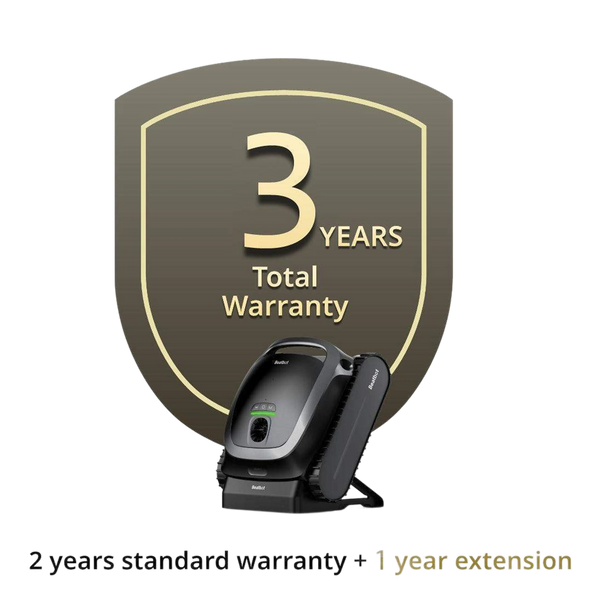Managing High pH and Alkalinity in Pools: Causes, Effects, and Solutions
Anyone who owns a pool knows the importance of right chemical balance for preserving a healthy pool ecosystem, and pH and alkalinity are topics that can't be emphasized too much. If not handled properly, they can cause trouble and lead to a cascade of issues.
Table of content
Understanding pH and Total Alkalinity in Pool Maintenance
What's pH?
pH measures the water's acidity or basicity on a scale from 0 to 14, with 7 being neutral. For optimal swimming conditions, the pH should ideally range from 7.2 to 7.8.
What is Total Alkalinity?
Closely related to pH, alkalinity measures all alkaline substances in water, serveing as a role of pH buffer. As this nickname suggests, a proper alkalinity level is essential for maintaining pH stability. Low TA levels can cause rapid pH fluctuations, while high levels make pH adjustments challenging. It's best to address TA imbalances before adjusting pH.
Ideal Total Alkalinity (TA) Ranges
The best TA range depends on the sanitizer you use:
- Calcium Hypochlorite, Sodium Hypochlorite, or Lithium Hypochlorite: The ideal TA range is 80-100 ppm.
- Dichlor, Trichlor, or Bromine: The ideal TA range is 100-120 ppm.
- Salt Water Chlorine Generator: Most manufacturers recommend TA levels between 80-120 ppm.
What If the pH/Alkalinity is too High?
When the pH and alkalinity of pool water are too high, the chemical balance will be disrupted. High pH and alkalinity levels significantly reduce the effectiveness of chlorine and other disinfectants, allowing bacteria and algae to proliferate. Additionally, in such conditions, calcium carbonate is more likely to precipitate, causing the water to become cloudy. Consequently, pools with high pH often suffer from equipment damage because algae and suspended particles can clog pool equipment, reducing efficiency and potentially leading to breakdowns. Moreover, swimming in such water poses health risks; high pH water can make swimmers' skin and hair rough, and the excessive algae and pollutant-carrying particles in the water can enter the respiratory system, facilitating the spread of diseases.To address the threats of high pH and alkalinity, it's essential to understand how they cause these issues.
What leads to this problem?
Overuse of chemicals is one cause.
When stabilizing the chemical balance, swimmers add a variety of chemicals, including common alkaline substances like baking soda, soda ash, borax, and pH increasers. Within the appropriate range, these substances can help stabilize the chemical balance. However, they can also cause the pH and alkalinity to rise to an undesirable range if added excessively.
External environmental factors can also be the culprit.
In some cases, high pH and alkalinity in pools are not due to your actions but are environmentally driven. If you're in a hard water area (water rich in minerals), using local water to fill your pool can result in high pH and alkalinity from the start due to the calcium-rich water. Additionally, organic compounds continuously released by plants and trees around the pool can react with the water, causing the pH to rise if they enter the water.

A Comprehensive Guide to Balancing Pool pH and Alkalinity
Achieving the perfect balance of pH and alkalinity in your pool is essential for maintaining water quality and ensuring swimmer comfort. This guide provides a step-by-step approach to help you adjust and maintain the ideal chemical levels in your pool.
Assess Your Pool's Current Chemistry
Start by testing the water to determine the current pH and total alkalinity (TA) levels. Use a fresh pool testing strip or a liquid testing kit, depending on your preference. This initial assessment is crucial for understanding the adjustments needed.
Correct Alkalinity Imbalances
Adjusting the TA is the first step in balancing your pool's chemistry. If the alkalinity is too low, boost it with sodium bicarbonate (baking soda). If it’s too high, use muriatic acid or sodium bisulfate, which will also affect the pH. Specific alkalinity adjuster products are available for more precise control. Ideally, dissolve the product in a bucket of water before adding it to the pool to prevent localized increases in alkalinity. A pool alkalinity calculator can help you determine the right chemicals and quantities to add.
Balance pH Levels
Once the alkalinity is adjusted, it's time to bring the pH levels within the recommended range of 7.2 to 7.8. There are varieties of chemicals available to raise pH level, such as soda ash (sodium carbonate) or baking soda (sodium bicarbonate ) . Be careful anyway, always wear proper safety gear and gloves. A pool pH calculator online can guide you in selecting the correct amounts.
Circulate and Reassess
Make gradual adjustments at a time to both pH and alkalinity. To make sure all the chemicals blended evenly in water, always keep your pump and filter running to allow the water to circulate . You have to wait at least 6 hours before retesting the water to ensure a prefect distribution. Repeat the process until you achieve the desired pH and TA levels.
Consistent Monitoring and Maintenance
Regularly test your water to maintain the necessary levels. Test your pH 2 to 3 times a week, while you can test your TA just once a week. This routine will help you catch any imbalances early and prevent extreme fluctuations in the chemical levels, ensuring a safe and comfortable swimming environment.
Relative Blogs
About the author



















